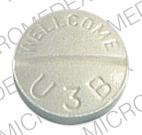Thioguanine Disease Interactions
There are 4 disease interactions with thioguanine.
Antineoplastics (applies to thioguanine) infections
Major Potential Hazard, High plausibility. Applicable conditions: Infection - Bacterial/Fungal/Protozoal/Viral
Because of their cytotoxic effects on rapidly proliferating tissues, antineoplastic agents frequently can, to varying extent, induce myelosuppression. The use of these drugs may be contraindicated in patients with known infectious diseases. All patients should be instructed to immediately report any signs or symptoms suggesting infection such as fever, sore throat, or local infection during antineoplastic therapy. Close clinical monitoring of hematopoietic function is recommended.
Thioguanine (applies to thioguanine) liver disease
Major Potential Hazard, Low plausibility.
Hepatotoxicity usually presented as hepatic veno-occlusive disease (hyperbilirubinemia, tender hepatomegaly, weight gain due to fluid retention, and ascites) or with signs of portal hypertension (splenomegaly, thrombocytopenia, and esophageal varices), has been reported during therapy with thioguanine. Therapy with thioguanine should be administered cautiously in patients with liver disease or predisposed to it. Patients should be instructed to immediately report any signs of hepatotoxicity such as jaundice, dark urine, upper right quadrant pain, or anorexia. Clinical monitoring of hepatic function and determination of the etiology of hepatic dysfunction is recommended.
Thioguanine (applies to thioguanine) myelosuppression
Major Potential Hazard, High plausibility. Applicable conditions: Bleeding, Fever, Bone Marrow Depression/Low Blood Counts
The most consistent, dose-related toxicity of thioguanine is bone marrow suppression. This may be manifested by anemia, leukopenia, thrombocytopenia, or any combination of these. However, any one of these findings may also reflect progression of the underlying disease. Since thioguanine may have a delayed effect, it is important to withdraw the medication temporarily at the first sign of an abnormally large fall in any of the formed elements of the blood. Therapy with thioguanine should be administered cautiously in patients with myelosuppression. It is recommended that evaluation of the hemoglobin concentration or hematocrit, total white blood cell count and differential count, and quantitative platelet count be obtained frequently while the patient is on thioguanine therapy.
Thioguanine (applies to thioguanine) TMPT enzyme deficiency
Major Potential Hazard, Moderate plausibility. Applicable conditions: Enzymopathy (Unspecified)
Thioguanine is closely related structurally and functionally to mercaptopurine. A rare deficiency in the enzyme thiopurine methyltransferase (TMPT) results in an increased sensitivity to the myelosuppressive effects of both drugs causing rapid bone marrow suppression following initial mercaptopurine or thioguanine administration. Therapy with thioguanine or mercaptopurine should be administered cautiously and at a reduced dose in patients with TMPT deficiency.
Switch to professional interaction data
Thioguanine drug interactions
There are 534 drug interactions with thioguanine.
Thioguanine alcohol/food interactions
There is 1 alcohol/food interaction with thioguanine.
More about thioguanine
- thioguanine consumer information
- Check interactions
- Compare alternatives
- Drug images
- Latest FDA alerts (1)
- Side effects
- Dosage information
- During pregnancy
- Drug class: antimetabolites
- Breastfeeding
- En español
Related treatment guides
Drug Interaction Classification
| Highly clinically significant. Avoid combinations; the risk of the interaction outweighs the benefit. | |
| Moderately clinically significant. Usually avoid combinations; use it only under special circumstances. | |
| Minimally clinically significant. Minimize risk; assess risk and consider an alternative drug, take steps to circumvent the interaction risk and/or institute a monitoring plan. | |
| No interaction information available. |
See also:
Cytoxan
Cytoxan is used for acute lymphocytic leukemia, acute nonlymphocytic leukemia, breast cancer ...
Botox
Botox is used cosmetically to reduce facial lines and wrinkles and for medical purposes for ...
Cytoxan Lyophilized
Cytoxan Lyophilized is used for acute lymphocytic leukemia, acute nonlymphocytic leukemia, breast ...
Novantrone
Novantrone is used for acute nonlymphocytic leukemia, multiple sclerosis, non-hodgkin's lymphoma ...
Daunorubicin
Daunorubicin is used for acute lymphocytic leukemia, acute myeloid leukemia, acute nonlymphocytic ...
Mitoxantrone
Mitoxantrone is used for acute nonlymphocytic leukemia, mantle cell lymphoma, multiple sclerosis ...
Cytarabine
Cytarabine is used for acute myeloid leukemia, acute nonlymphocytic leukemia, chronic myelogenous ...
Cyclophosphamide
Cyclophosphamide is used for acute lymphocytic leukemia, acute nonlymphocytic leukemia, brain ...
Further information
Always consult your healthcare provider to ensure the information displayed on this page applies to your personal circumstances.


